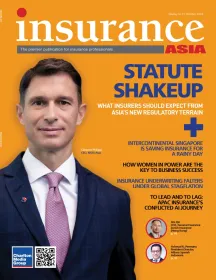
New risk-based capital regime sets nuanced standards for HK insurers
A difference under HKRBC is the shift from the old Solvency I-based HKIO regime.
Hong Kong's new risk-based capital (HKRBC) regulatory framework, effective from 1 July, aims to strengthen enterprise risk management (ERM) practices amongst local insurers, according to AM Best.
The HKRBC replaces the previous Hong Kong Insurance Ordinance (HKIO), introducing more comprehensive capital requirements and increased industry transparency.
For companies rated by AM Best, the HKRBC ratio is approximately half of the solvency ratio under the previous HKIO regime.
Despite some correlation, there is no direct equivalence between HKRBC ratios and Best’s Capital Adequacy Ratio (BCAR). Insurers are adjusting their business and investment strategies to optimise capital efficiency under the new framework.
The HKRBC regime consists of three key components: Pillar 1 covers capital adequacy and the valuation of assets and liabilities, Pillar 2 focuses on corporate governance and ERM, whilst Pillar 3 enhances public disclosure requirements. The new Pillar 3 regulations have improved transparency across the sector but have also increased administrative costs for smaller insurers.
A notable difference under HKRBC is the shift from the old Solvency I-based HKIO regime, which set capital requirements based on premiums or reserves regardless of risk profile.
The new system requires insurers to maintain capital in line with their actual risk exposure. Additionally, insurers must forecast their solvency levels for the next three years, incorporating risk analysis and mitigation strategies in their Own Risk and Solvency Assessment (ORSA) reports.
The transition to HKRBC has been phased in over several years. Pillar 2, which mandates ERM practices and ORSA submissions, was implemented in 2020.
The process leading to Pillar 1 began in 2017 with quantitative impact studies (QIS) used to analyse capital data. Following three rounds of QIS, the final rules were confirmed in April, and the regime officially commenced on 1 July.
With adequate preparation time, insurers are expected to adapt smoothly, refining their ERM frameworks and adjusting capital strategies to meet the new regulatory requirements. This will give them a clearer view of their solvency positions, risk exposures, and management approaches moving forward.



















 Advertise
Advertise


